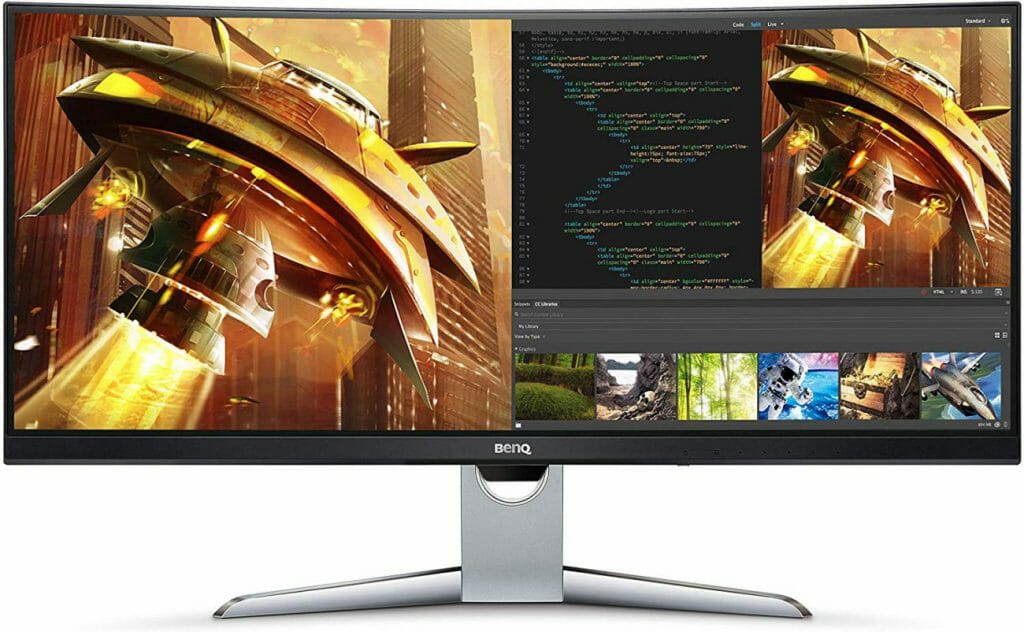Are you a Photo Editor or in a search of the Best Monitors for Photo editing under 200 Dollars? Then you are in right place. There are many monitor options out there, but photo editing requires a specific kind of monitor, which isn’t easily accessible in this price range.
Photo editing is a highly technical discipline that needs specialized monitors, most of which cost well over $500. When it comes to choosing monitors for photo editing, color accuracy is the most important thing to consider. This is because you want your image to appear more realistic and accurate, and you also want it to be accurate across all devices.
Color details and contrast are very important. This makes it easier and more effective to distinguish between colors and shades. Consistency of brightness is also a significant element. It helps in the perception of an object (shades and color) as the same at various brightness levels.
As a solution, we have created a list of some of the more reasonably priced models on the market. Continue reading if you want to get the best monitors for photo editing under 200 USD.
Top 5 Best Monitors for Photo Editing Under 200 Dollars
Before you start searching through the list, keep in mind that there will definitely be a huge difference between a monitor that costs less than $200 and one that costs more than $500.
1. ASUS VA24DQ 23.8 Inch Monitor For Photo Editing Under $200
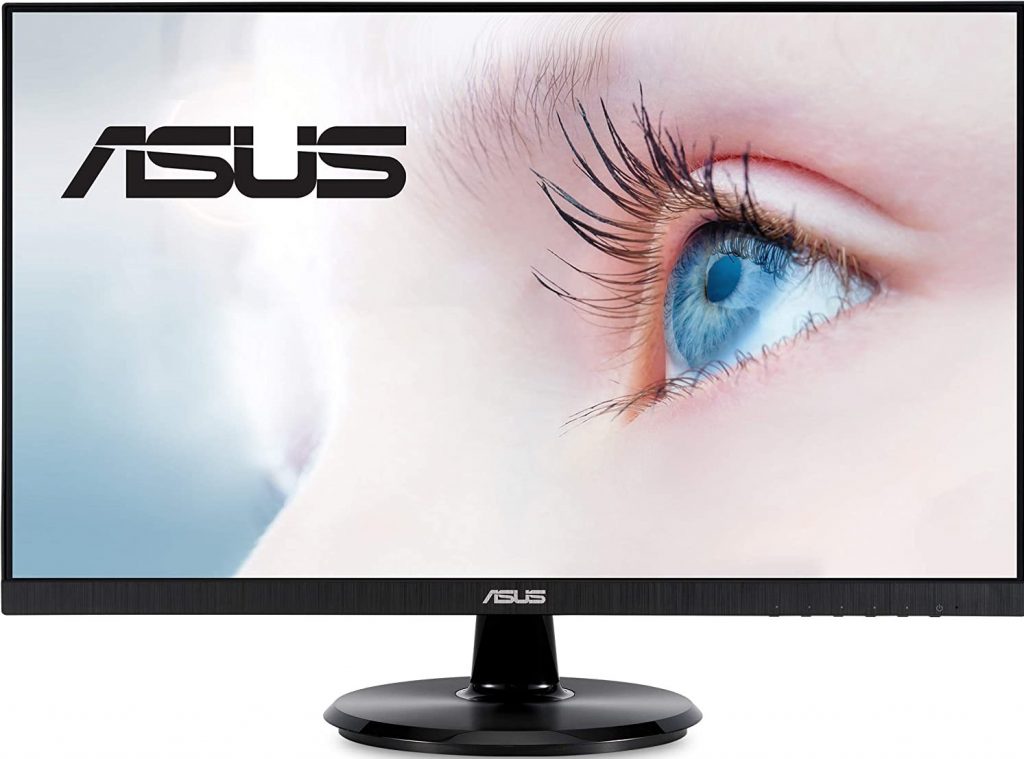
ASUS VA24DQ monitor has a 5-star rating on Amazon, and it is also Amazon’s choice. A 23.8-inch IPS display with Full HD (1920 x 1080) resolution is featured on the ASUS VA24DQ Eye Care Monitor.
Expanded vision due to the 178° IPS wide-viewing-angle screen, which provides constant, true color at any viewing angle, minimizing color shift and ensuring a better viewing experience.
FreeSync technology is a technology that allows you to sync Adaptive-Sync/FreeSync and eliminates tracing and ensures sharp and clear video playback at up to 75Hz refresh rate.
Its frameless design makes it ideal for near-seamless multi-display setups that provide even more immersion. Flicker-Free technology reduces eye strain and increases comfort when gaming for long periods.
GamePlus technology was created in collaboration with professional gamers to provide in-game innovations that allow you to get more out of your game.
Gamers may use these tools to practice and enhance their gaming abilities. Ultra-Low Blue Light Technology lowers the amount of blue light emitted by the display, which may be dangerous. The amount of blue light reduction may be controlled using four different filter settings.
It has HDMI, Display Port, and VGA connectors, which allow it to connect to a variety of devices. With an ergonomic tilt, you’ll be able to find your optimal viewing position quickly. The monitor may also be mounted on the wall due to its VESA compatibility.
2. PHILIPS 271E1S 27 Inch Best Monitor Under 200 Dollars For Photo Editing
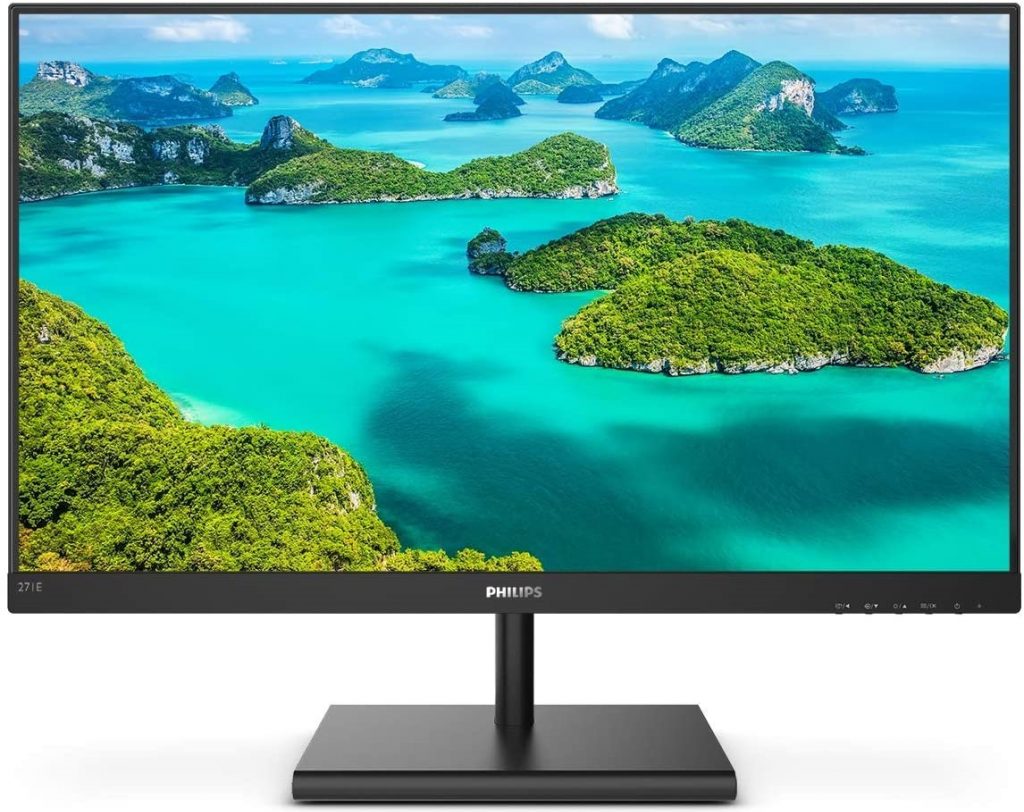
The Philips 271E1S Line monitor is a stylish addition to your workspace, with stunning visuals and an attractive design.
This large-screen monitor is ideal for professional applications that require color accuracy and continuous brightness at all times, as well as for photography, videos, and web surfing. It also has 5 Star ratings and an Amazon’s Choice.
Those who deal with high-quality photographs and people whose work needs precise color, such as content designers or digital photographers, benefit by having a broad color range. The 91% NTSC and 101 % sRGB coverage on this monitor is impressive.
These statistics indicate that you can see 91 percent and 101 percent of their respective color ranges, which is a significant amount. Professionals that work with applications that require color accuracy and spread will benefit from this feature.
Philips’ SmartContrast technology analyses the content you’re viewing and changes the colors and backlight intensity automatically. When dark colors are displayed in digital images, videos, or games, this dynamically enhances contrast.
SmartImage game mode allows you to select from a variety of gaming profiles to adjust your experience to the game you’re playing.
Dark themes in games benefit from the “FPS” mode, which allows you to view hidden things in dark areas. The “Racing” setting adjusts the screen to have the fastest response time, and the most color, and image modifications.
Philips Flicker-free Technology uses a new way to control brightness and reduce flicker for a more pleasurable viewing experience.
IPS displays utilize the advanced technology to provide extra-wide viewing angles of 178/178 degrees, allowing you to watch the display from almost any angle.
3. SAMSUNG BUSINESS FT400 24 Inch Best Monitor For Photo Editing
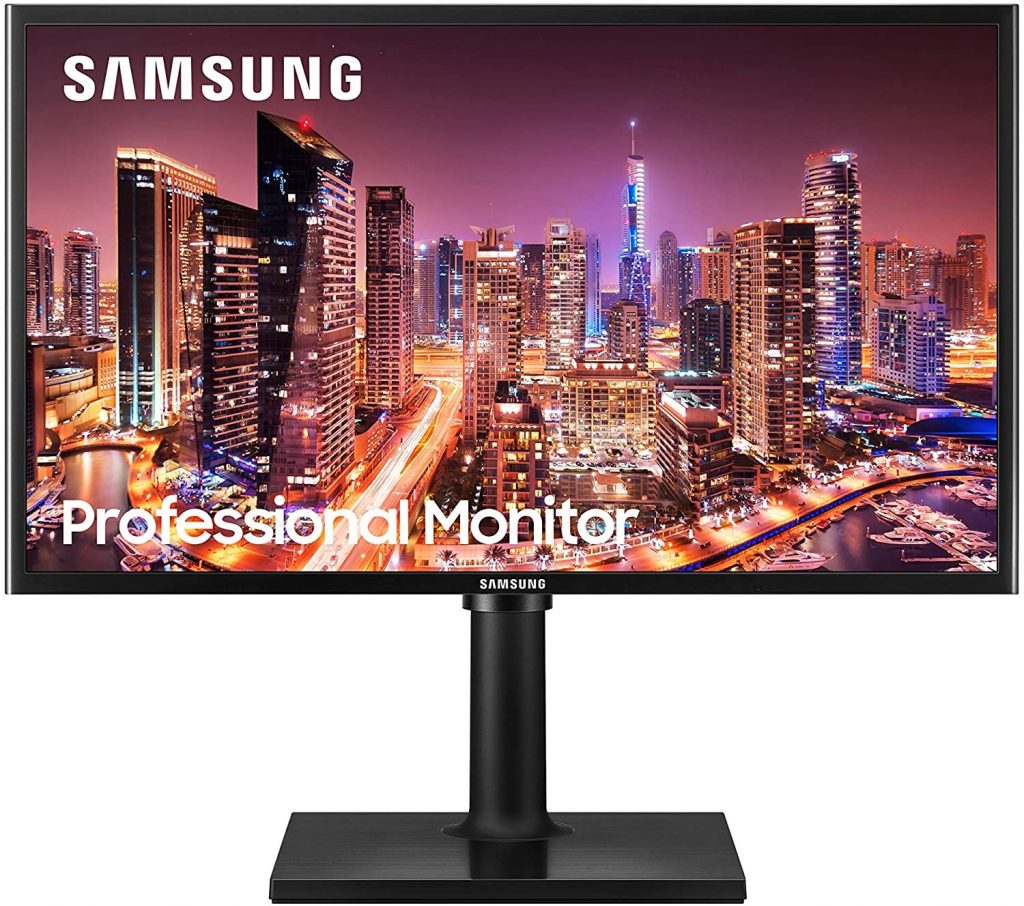
Samsung FT400 is a low-cost business monitor with good ergonomics, high image quality, and a sleek design. Even at off-angles, IPS panel technology produces clear types and vibrant images.
The use of thin bezels helps to make multi-monitor setups more seamless. The HDMI and VGA ports make connectivity easy, and the fully adjustable stand makes long days more comfortable.
With no color washing, you can work comfortably on the productivity-boosting widescreen, and everyone can see true tones and tints from virtually every angle. The FT400 Series includes HDMI for high-speed connections and VGA for older analog applications.
FT400 Series monitor is height-adjustable and swivels, tilts, and pivots. Because the monitor is VESA compatible, installing it on a wall or using a separate mounting arm is simpler.
AMD FreeSync technology reduces stuttering and prevents tearing, resulting in a smoother video display and playback.
Even throughout lengthy work hours, Eye Saver Mode and Flicker-Free technologies assist to decrease eye strain for a more comfortable work experience. Blue light levels are reduced when Eye Saver Mode is enabled. Furthermore, Flicker-Free technology reduces flickering at all brightness levels.
4. HP24mh FHD 23.8 Inch Monitor For Photo Editing Under $200
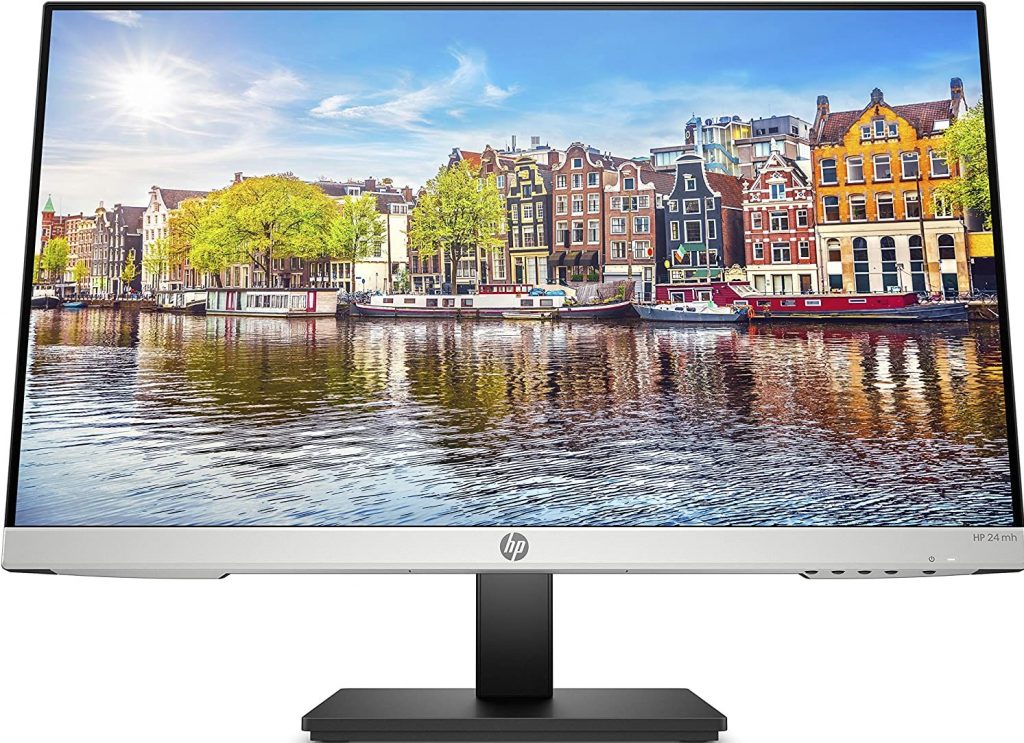
Without breaking the budget, the HP 24mh FHD Display delivers all the elegance and performance you need in a monitor. With this height-adjustable ultra-slim HP monitor, you’ll have more desk space than you ever imagined.
With a maximum resolution of 1920 x 1080 at 75 Hz, IPS technology provides brilliant images and memorable quality. Best monitors for photo editing under 200 USD.
Vibrant detail could be seen from almost every angle, and color and image clarity are maintained over an ultra-wide 178° horizontal and vertical viewing spectrum.
An ultra-wide viewing experience allows for seamless multi-monitor configurations with almost no bezel encircling the panel on three sides.
Achieve the visual quality you want without the extra dongles; connect to your PC, game console, and peripherals for big-screen pleasure with a variety of connectors, including HDMI, DisplayPort, and VGA. With two built-in 2W speakers, enjoy great sound and more immersive entertainment.
The Low Blue Light option reduces eye strain by shifting colors to a warmer hue and making whites more realistic. With a 100mm range of travel, you can easily adjust your display to the most comfortable position. It has a 5° forward or 23° backward tilt, you may customize the screen to your desire.
With an environmentally responsible and energy-efficient monitor backed by HP’s standard 1-year limited warranty, you can rest easy and work confidently.
5. BenQ 24 Inch IPS Best Monitor For Photo Editing under 300 Dollars
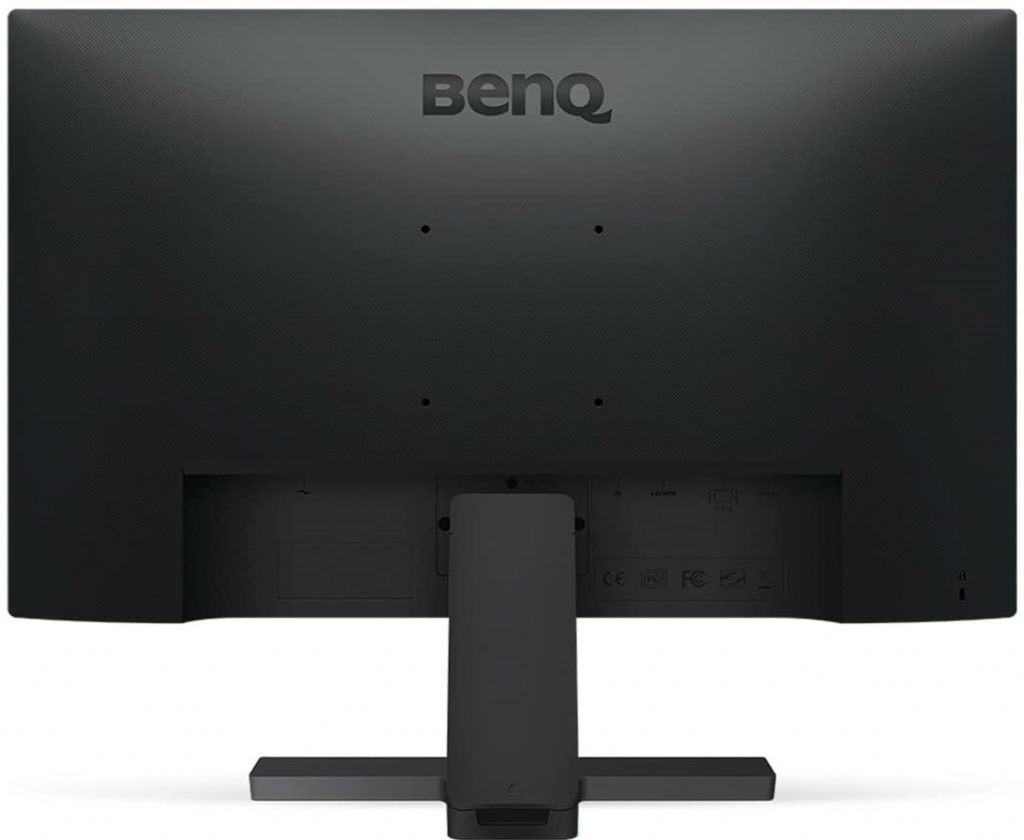
BenQ’s GW2480 23.8″ frameless monitor combines ultra-low bezels with hidden cable management for beautiful simplicity. IPS panel, 24 inches full HD 1080P: Built-in speakers, and a 23. 8″ Full HD IPS widescreen with 1920×1080 resolution and 250 nits of brightness. Wide viewing angle: 178° viewing angle ensures clarity from any angle.
Ultra-slim bezel for almost seamless multi-panel setups for expanded vision, space-saving base, and elegant design for home office. Best monitors for photo editing under 200 USD.
Low blue light and zero-flicker technology minimize headaches and eye strain, while proprietary brightness Intelligence Adaptive technology regulates brightness for pleasant viewing. This eye technology produces visuals that are optimized and comfortable on the eyes.
Integrated cable management system: cords are neatly hidden inside the monitor stand. 100 x 100 VESA wall mount (millimeter). VGA is the technology used for connectivity. Response time – 8ms, 5ms (GtG), refresh rate – 60Hz, voltage rating – 100 – 240V
You might be exposed to 5.8 million flickers on your screen if you spend eight hours in front of a monitor. Eye strain, impaired vision, headaches, and disrupted sleep habits are all symptoms of this. Your BenQ monitor is looking after your eyes while you’re staring at it.
Buying Guide For Best Monitors For Photo Editing Under 200 Dollars
The following are the important features and technologies to look for in a monitor that you’ll use for photo editing.
Monitor SizeMonitors with a larger screen are better for your eyes. You won’t be able to view the entire detail of the images you’re editing on a huge LCD panel with a low resolution.
A small monitor with a super-high resolution, on the other hand, might be suboptimal. We recommend either a 27-inch monitor with 1440p resolution (2,560 by 1,440 pixels, commonly known as QHD) or a 32-inch monitor with 4K resolution (3,840 by 2,160 pixels).
ResolutionMore content can be displayed on a screen with a higher resolution. This involves displaying a greater proportion of the photo or adding more editing panels. When you zoom out, you can see more details.
A Full HD (1920 x 1080) monitor is recommended for photo editing. Even a 4K (3840 x 2160) IPS panel can be had at a reasonable price, but the possibilities are endless. You don’t have to zoom in to see if the photos are sharp, and they look great.
Screen TechnologyThe three most widely used LCD panel technologies are TN, VA, and IPS. Each has its own individuality, qualities, and faults. However, just one is best for photo editing. That is, in a sense, IPS.
Most importantly, IPS provides the most accurate color accuracy. Color and contrast consistency is much better on IPS (in-plane switching) screens than on previous, less expensive TN (twisted nematic) panels. The IPS technology is used in all of the screens in our premium list.
Color Space sRGB or Adobe RGBsRGB is the industry norm for all screens and devices. You can’t go wrong with this because it’ll work on any device. sRGB is definitely less complicated.
It’s the standard color space for digital devices, making productivity easier. Adobe RGB, on the other hand, technology delivers more colors and saturation, which is very important for printing.
Graphics CardA professional quality graphics card, such as an NVidia Quadro or AMD Radeon Pro, is required for full precision image editing with 10 bits of color per channel. When purchasing a high-end monitor, be sure your computer’s graphics are capable of seamlessly showing 4K resolution.
Aspect RatioMost current displays have a 16:9 aspect ratio, which is known as “widescreen.” When editing regular still images, this matches current video standards and also leaves a little room on the side of the screen for tools and palettes.
After using a 16:9 screen, you’ll never go back to a ‘narrow’ 4:3 monitor. Consider ultra-wide monitors, which provide greater screen real estate for seeing many windows or palettes.
Calibration SettingIf you’re looking for an affordable monitor for photo editing, be sure it has enough monitor calibration choices. A service menu is available on most midrange and professional screens.
It supports full 8-bit calibration from RGB (0,0,0) to RGB (0,0,0). (255,255,255). On the other hand, some companies provide color calibration ranging from 1 to 100. That should suffice for the majority of users.
Rotatable FeatureMany displays now have the ability to be turned 90 degrees. It’s especially beneficial if you’re going to be editing a lot of photos. This was previously only available on professional displays, so make use of it.
Color Reproduction AccuracyColor reproduction is important to every visual work of art. It’s much more important when you’re the one who’s doing it. Nobody will be able to perceive the work in its real hues if you can’t.
Such variations can drastically affect the appearance of a photo. A move to cooler tones may send the wrong impression.
The issue is, that if you get the image correctly, it will appear the same everywhere. Photos seen on a cooler monitor will appear quite cool if your display is too warm, and the other way around.
Response TimeIf you’re editing photos or watching movies, the monitor’s quick response time (4ms) will help you avoid motion blur and ghosting. It’ll also be useful in games. You can even overclock the monitor to 71Hz–75Hz if you’re a gamer, though you could notice some ghosting at that point.
Frequently Asked Questions
Following are the answers to some frequently asked questions about the monitors for photo editing.
What sort of Photo editing monitor should I get?
The resolution you’ll require is mostly determined by the type of photo editing you’ll be doing, and the size of the photos you’ll be working with.
If you’re dealing with large photos, a 4k display could be optimal, but if you’re mostly dealing with smaller photos, a 1080 or even 1440 display would suffice.
Is sRGB decent color space for photo editing?
Professional displays offer larger color spaces, allowing for more bright and detailed images. When searching for a monitor, seek one that has at least 90% sRGB (optimal for presenting your work on the web) and 70% Adobe RGB coverage (ideal for printed images).
sRGB is the computer standard; it’s not extremely colorful, so it’ll vary with time, but if you have a calibrated 100 percent sRGB display, it’ll be the closest match for what other people will see on their computers. You can edit photographs even if your display is poor.
Is HDR required for photo editing?
If you’re a content maker or editor who wants to edit high dynamic range content on your own, you’ll need a monitor that can show HDR. Your images and videos will seem just as they do on any other HDR device due to the support of a wide color gamut and high brightness.
Conclusion
When you are looking for Best Monitors for Photo editing under 200 Dollars, you should consider color accuracy, eye care technology, screen size, response time, graphic cards, aspect ratio, and other features discussed above.
In this article, we have discussed the top 5 best affordable monitors for photo editing. ASUS VA24DQ 23.8 Inch Monitor is on the top of the list. It has a 5-star rating and the best features for photo editing.
